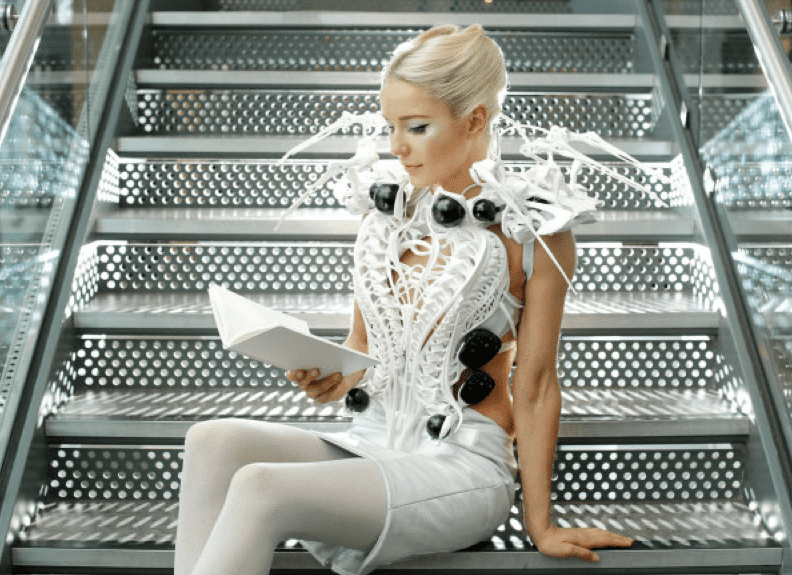Designer Anouk Wipprecht and Intel’s Philip Moynagh are pictured with Teodora Sutra who is modelling the Spider Dress.
Today at Dublin’s Science Gallery, Intel showcased a Smart Spider Dress, powered by the Intel Edison, which blends fashion with robotics and wearable technology to express the wearer’s emotions and protect their personal space.
The dress, designed by experimental designer Anouk Wipprecht made its public debut at the 2015 International Consumer Electronics Show in Las Vegas in January and will this week form part of the LIfelogging exhibition at the Science Gallery in Dublin where Intel is hosting a three-day residency centered around Internet of Things and wearables with the dress as the centre piece of the exhibit.
Dutch designer Wipprecht is known for creations such as the brainwave-monitoring Synapse dress, Smoke Dress, Intimacy 2.0, 3D-printed outfits for Cirque du Soleil and the dress Fergie wore during the Black Eyed Peas live performance at Super Bowl 2011. She joined Intel last year to work on projects that inspire innovation in wearable technologies beyond wrist and eyewear.
Speakingat the launch of Intel’s Lifelogging residency, she said: “Fashion and tech are merging at the moment, beyond blinking dresses or cute skirts. I’m showing how fashion can be thought provoking, something that pushes people to think and share their feelings.”
Her latest creation is a 3D-printed experimental dress crowned at the collar with robotic spider legs. The legs constantly move, reacting to real-time biometrics based on pre-programmed social norms and violations. “Spider Dress acts as the interface between the body and the external world,” Wipprecht said. “It uses technology and the garment as a medium of interaction.”

Teodora Sutra pictured modelling the Spider Dress.
The so-called animatronic arachnid limbs on the Spider Dress know exactly when someone is invading the wearer’s personal space. The legs are driven by computer and sensor technologies that allow it to be autonomous, but assistive and adaptive to the owner’s emotions and desires.
“Since the system based with mechanic spider legs is literally hosted on the shoulders of the wearer and attacks using the same viewing angle as the wearer, the system knows how you feel and adapts to those feelings,” she added.
Using wireless biometric signals, the system makes inferences based on the stress levels in your body. It can differentiate between 12 states of behavior. Wipprecht calls it an interesting interplay between co-control and education of your own body and mind. “When approached at an aggressive pace, the system answers in a territorial attack mode,” she said. “But when you walk up to the dress in a more cautious, friendly symbiotic way, you can almost get the dress to invite you closer, as if to ‘dance’ with you.” She calls it her most complicated dress so far because of the depths she explored around human-system interactions.
The embedded Intel Edison module brings computing intelligence to the dress. Wipprecht said that she was originally measuring behaviors using external sensors, but embedding Edison in the dress has allowed her to store and measure data from anybody wearing the dress. “Intel’s Edison technology allowed me to upgrade my original prototype design to a mature version, one that is fully 3D printed, mechatronic and extra sensory.”
Also speaking at the event, Philip Moynagh, vice president of the Internet of Things Group at Intel said:“We are at an extraordinary transition point that we need to wake up to as they don’t happen at high frequency. Internet revolutions can happen anywhere, including Ireland, if we open our minds to the possibilities and those possibilities are endless when we consider the vast number of inanimate objects that we use today that are functional but not smart. That is the opportunity of the Internet of Things.”



